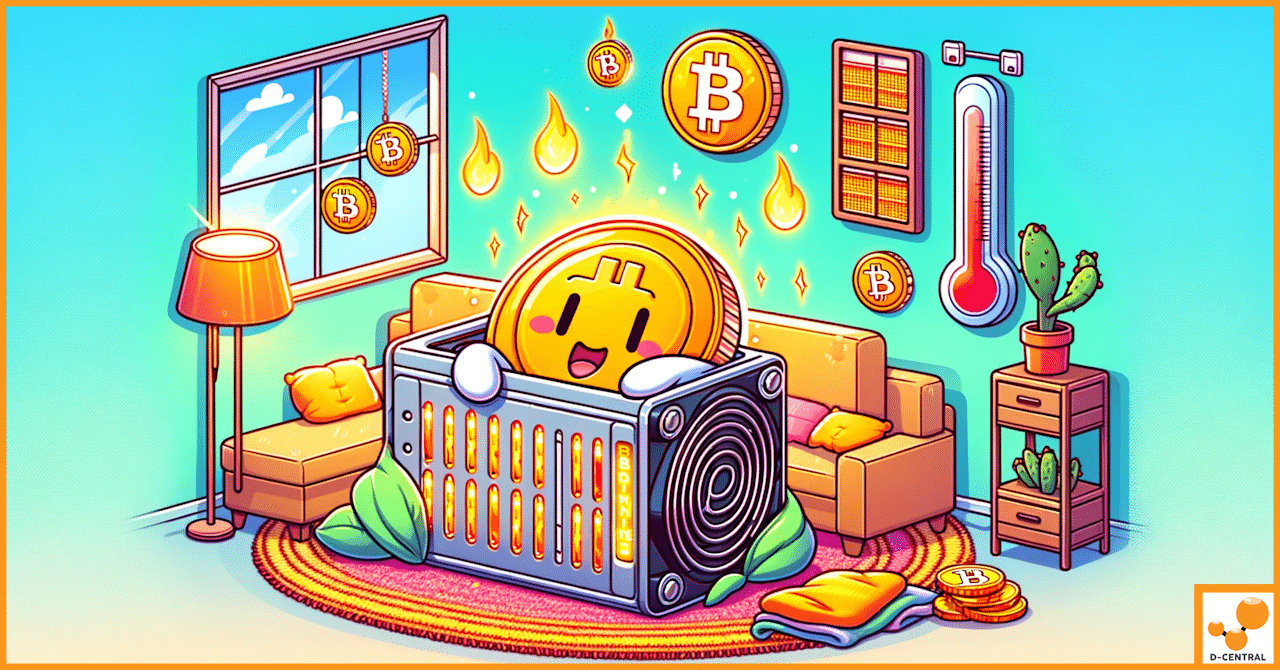
How Bitcoin Paved the Way: A Comprehensive Look at Its Unmatched Legacy
In the annals of financial innovation, few phenomena have captured the imagination and sparked as much debate as Bitcoin. Born
4479 Desserte Nord Autoroute 440, Laval, QC H7P 6E2

The Antminer L3+ is a highly celebrated model within the realm of cryptocurrency mining, particularly noted for its prowess in Litecoin mining. Manufactured by Bitmain, one of the leading producers of mining hardware, the Antminer L3+ leverages Application-Specific Integrated Circuit (ASIC) technology to offer exceptional hashing power tailored specifically for mining Litecoin, a popular alternative to Bitcoin known for its quicker transaction times. Since its inception, the L3+ has become a favorite due to its efficiency and reliability, providing a strong balance between power consumption and mining capability. Its popularity underscores its role in promoting the accessibility and profitability of Litecoin mining for both novice and experienced miners.
As cryptocurrency mining rigs like the Antminer L3+ are designed to run continuously to maximize mining returns, they often generate significant noise, which can become a major issue in residential and shared environments. The continuous hum and heat output of these devices can disrupt the tranquility of home settings, making silent mining not just a preference but a necessity for many. The pursuit of quieter mining operations has led to innovations in cooling technology, modifications in mining rig setups, and the development of noise reduction solutions. These advancements aim to mitigate the impact of mining noise, allowing individuals to mine effectively without disturbing their living conditions or those of their neighbors. This makes silent mining an essential consideration for integrating cryptocurrency mining into daily life without compromising the comfort and harmony of personal and communal spaces.
The Antminer L3+ is a dedicated mining hardware device from Bitmain that is optimized for mining Litecoin using the Scrypt hashing algorithm. Below are the key specifications of the Antminer L3+:
When compared to other mining hardware, particularly those also targeting the Scrypt algorithm, the Antminer L3+ strikes a balance between performance and operational noise, a critical consideration for residential miners.
In comparison, other models like the Antminer S9, which is designed for Bitcoin mining using the SHA-256 algorithm, might offer higher hash rates but also come with increased noise levels and power consumption. Innovations in fan design, cooling systems, and firmware allow some models to operate more quietly, but often at the cost of reduced performance.
The L3+ remains a favored option for those mining Litecoin due to its balance of efficiency, cost, and relative noise levels, making it suitable for setups outside of industrial mining operations. Adjustments in fan settings, cooling enhancements, and strategic placement within the home can further mitigate noise, aligning the Antminer L3+ with the needs of home-based crypto miners.
Since its introduction, the Antminer L3+ has undergone several iterations and enhancements aimed at improving its efficiency and reducing its noise output, crucial for miners who operate in less isolated environments. Initially released as a powerful solution for Litecoin mining, the focus gradually shifted towards making the unit more suitable for residential areas through noise reduction techniques.
One of the key advancements in this area has been the development and implementation of custom firmware upgrades such as VNish and Blissz. These firmware versions allow more precise control over the miner’s fan speeds, enabling users to reduce the noise level without significantly impacting the mining efficiency. They provide features that include automatic temperature control and optimized fan curves, which are essential for maintaining a balance between cooling and noise.
Moreover, Bitmain has responded to user feedback by incorporating better-quality fans and improved design layouts that enhance airflow while reducing acoustic output. These improvements help in dissipating heat more effectively and quietly, addressing one of the primary sources of noise in previous models.
Mining cryptocurrency is inherently noisy due to the high-performance components and cooling mechanisms involved. High-performance mining rigs like the Antminer L3+ are designed to solve complex algorithms rapidly, a process that generates a substantial amount of heat. To manage this heat, powerful fans are employed, which are the primary source of noise. These fans often operate at high speeds, producing sound levels that can be disruptive, especially in quieter, residential settings.
The architecture of mining hardware is another factor. The compact, dense configuration of components such as ASIC chips intensifies the heat generation, requiring even more aggressive cooling solutions. While manufacturers continuously work to improve the efficiency of these machines, the fundamental need for effective heat dissipation often keeps noise levels high. This ongoing challenge necessitates innovations in fan technology, cooling systems, and machine design to achieve quieter operations without compromising mining efficiency.
Noise pollution from mining operations can significantly affect the quality of life in residential areas. The constant drone of mining rigs can be a nuisance, disrupting sleep patterns and everyday activities. This can lead to strained relations with neighbors and, in some cases, legal challenges where local noise ordinances are in place.
In shared living environments such as apartment buildings, the issue is compounded due to close proximity between residents. Here, the continuous operation of loud mining equipment can lead to complaints and potential legal implications, pushing miners to seek quieter solutions or halt their operations entirely.
To address these challenges, several strategies can be implemented:
By implementing these strategies, miners can reduce the impact of noise from their operations, ensuring a more harmonious coexistence with their surrounding community while continuing their mining activities.
Custom firmware can significantly enhance the functionality of your Antminer L3+, particularly in terms of fan control and performance efficiency. VNish, for example, is popular for its ability to customize fan speeds and optimize mining performance. Here’s a step-by-step guide on how to install VNish or similar firmware:
The PSU is a critical component of your mining setup and can also be a significant source of noise. Here’s how you can modify it for quieter operation:
By following these steps, you can significantly reduce the noise output from your Antminer L3+ while ensuring it remains efficient and effective in its mining operations.
When setting up a mining rig like the Antminer L3+, choosing the right fans is crucial for maintaining efficient cooling while minimizing noise. Here’s an in-depth review of some of the top fans suitable for silent mining operations:
Both fans are excellent choices for miners who need effective cooling with minimal noise. They are also durable, which is essential for the continuous operation typical of cryptocurrency mining.
To upgrade the fans in your Antminer L3+ or similar mining hardware, follow these detailed steps to ensure optimal airflow and reduced noise:
Upgrading your mining rig with high-quality, silent fans can significantly improve the operational environment by reducing noise, which is particularly important in shared spaces and residential areas.
Effective heat management is crucial for maintaining optimal performance and longevity of mining equipment. Here are some innovative techniques:
Reducing noise can not only make a mining setup more pleasant but also more socially and environmentally friendly, especially in residential areas:
By implementing these advanced cooling and noise reduction strategies, you can significantly improve the efficiency and sustainability of your mining operations, making them more suitable for varied environments, including residential areas. These methods not only enhance the operational capacity of mining rigs but also contribute to a more agreeable and less disruptive presence in shared spaces.
Configuring the Antminer L3+ for quieter operations while maintaining efficiency involves careful adjustment of its software settings. This section covers how to tweak these settings to minimize noise output without significantly impacting the mining performance.
root for both username and password).By carefully adjusting the settings and considering environmental factors, you can significantly reduce the noise generated by your Antminer L3+ without compromising its mining capability. Regular updates and tweaks based on the performance data will help in maintaining optimal operations.
To ensure your Antminer L3+ continues to run efficiently and quietly, it’s essential to establish a routine for maintenance and to use monitoring tools effectively. Here’s a guide on how to keep your mining operation in top condition.
Implementing a structured routine for maintenance and utilizing the right tools for monitoring are key to maintaining the efficiency and longevity of your Antminer L3+. Regular checks and updates can help you catch potential issues early, saving time and resources while maximizing your mining productivity in a quiet and effective manner.
The pursuit of silent mining in the cryptocurrency realm is not just a technical challenge but a significant improvement for both miners and the community around them. The advancements in mining technology, such as the development of quieter mining rigs and dual-functional equipment like the Antminer L3+ Space Heater Edition, demonstrate the potential for mining operations to be both efficient and considerate of their environmental impact.
Silent mining addresses the critical issue of noise pollution—a common byproduct of traditional mining setups. By reducing noise, miners can integrate their operations within residential areas without disturbing the peace of the surrounding environment. Moreover, silent mining practices contribute to sustainability efforts by reducing the energy consumed in cooling noisy equipment. The integration of technologies like ASIC shrouds, advanced cooling systems, and soundproofing measures plays a pivotal role in achieving these quieter operations.
As cryptocurrency continues to carve its niche in the global economy, the importance of innovative mining solutions becomes ever more paramount. The community is encouraged to continue pushing the boundaries of what’s possible in silent mining technology. Innovations that minimize environmental impact while maximizing efficiency will not only lead to broader acceptance of mining practices but also help in setting new standards for future technological developments in the industry.
The journey towards silent mining is an ongoing process, reflecting a commitment to technological advancement and environmental responsibility. By embracing these innovations, the mining community can ensure that cryptocurrency mining grows in a manner that is both profitable and sustainable.
What is the Antminer L3+?
The Antminer L3+ is a dedicated cryptocurrency mining device developed by Bitmain, optimized for mining Litecoin. It uses ASIC technology to offer significant hashing power tailored for Scrypt hashing algorithm mining, balancing efficiency and power consumption.
What are the key specifications of the Antminer L3+?
The key specifications include a hash rate of 504 MH/s, power consumption of about 800 Watts, and efficiency of approximately 1.6 Joules per Megahash (J/MH). It weighs around 4.5 kg and is equipped with two cooling fans.
How does the Antminer L3+ compare to other mining hardware?
Compared to other mining hardware, the Antminer L3+ provides a balance between performance and operational noise, making it suitable for non-industrial, residential miners. It offers competitive hash rates for Scrypt mining without excessive power draw or noise production.
What advancements have been made for silent mining with the Antminer L3+?
Advancements for silent mining include the development of custom firmware upgrades such as VNish and Blissz, which allow precise control over fan speeds, and the incorporation of better-quality fans and design layouts by manufacturers to reduce noise levels.
What are the technical challenges of silent mining?
Silent mining faces challenges such as inherent noise from high-performance components and cooling mechanisms necessary to dissipate heat generated by rapid algorithm computations, and the compact hardware architecture which intensifies heat generation.
What strategies can miners use to mitigate noise?
Strategies include building or purchasing soundproofing enclosures, investing in advanced cooling solutions like liquid cooling systems, strategic placement of mining equipment, restricting operations to certain hours, and engaging with neighbors to alleviate tensions.
How can custom firmware improve the Antminer L3+’s operation?
Custom firmware such as VNish can enhance the functionality of the Antminer L3+ by allowing more precise fan control, optimizing mining performance, and potentially reducing noise levels through customized fan speed settings.
What role do fans play in silent mining operations?
Fans are crucial for maintaining efficient cooling while minimizing noise in mining operations. Selecting high-quality, low-noise fans and ensuring optimal installation can significantly affect the noise output and overall efficiency of mining rigs.
How can liquid cooling and ASIC shrouds contribute to silent mining?
Liquid cooling systems offer superior temperature control with much lower noise levels, while ASIC shrouds help channel hot air directly out of the mining environment, both contributing to quieter and more effective cooling strategies for mining operations.
What is the significance of silent mining in the cryptocurrency community?
Silent mining reduces noise pollution, making mining operations more compatible with residential areas and contributing to sustainability by reducing energy consumption for cooling. It represents an ongoing commitment to innovation and environmental responsibility in the cryptocurrency mining industry.
DISCLAIMER: D-Central Technologies and its associated content, including this blog, do not serve as financial advisors or official investment advisors. The insights and opinions shared here or by any guests featured in our content are provided purely for informational and educational purposes. Such communications should not be interpreted as financial, investment, legal, tax, or any form of specific advice. We are committed to advancing the knowledge and understanding of Bitcoin and its potential impact on society. However, we urge our community to proceed with caution and informed judgment in all related endeavors.
Related Posts

In the annals of financial innovation, few phenomena have captured the imagination and sparked as much debate as Bitcoin. Born

Bitcoin mining, the process of validating transactions and securing the Bitcoin network, is a fundamental aspect of the cryptocurrency’s infrastructure.

In the ever-evolving landscape of cryptocurrency, Bitcoin remains the gold standard, and mining it has become a highly competitive endeavour.